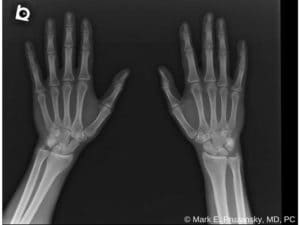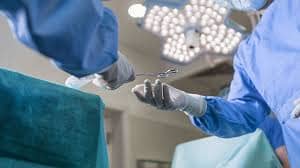
SCAPHOID FRACTURE:
THE Scaphoid is the most important of all the carpal bones. It is one of the small bones in the wrist. It is the wrist bone that is most likely to break. The scaphoid is located on the thumb side of the wrist, in the area where the wrist bends. It is very important to see a doctor if you have pain in the wrist after a fall, as the single most important factor leading to complications like failure of the bone to unite is a delay in diagnosis.!!
The Scaphoid is located at the base of the thumb, just above the radius bone.
The Scaphoid is located at the base of the thumb, just above the radius bone. It can most easily be identified when the thumb is held in a “hitch-hiking” position. The scaphoid is at the base of the hollow made by the thumb tendons. Pain or tenderness in this area can be a sign that the scaphoid is injured.
Cause
A Scaphoid fracture is usually caused by a fall on an outstretched hand, with the weight landing on the palm. The end of one of the forearm bones (the radius) may also break in this type of fall, depending on the position of the hand on landing.
- Fracture Around The Shoulder
- Shoulder Arthroscopy
- Shoulder Impingement
- Rotator Cuff Tear
- frozen Shoulder
- Shoulder dislocation
- Shoulder Joint Replacement
- Biceps Tendinitis
- Reverse Shoulder Replacement Surgery
- Calcific Tendinitis
- Elbow Replacement
- Elbow Arthroscopy
- Tennis Elbow
- Wrist Fractures
- Wrist Scaphoid Fractures
- Wrist Arthroscopy
- Rheumatoid Wrist
- Carpal Injuries
- Wrist Scaphoid Nonunion
Services
Fractures of the Scaphoid occur in people of all ages, including children. The injury often happens during sports activities or a motor vehicle accident. Men aged 20 to 30 years are most likely to experience this injury.
There are no specific risks or diseases that increase the chance of having a scaphoid fracture. Some studies have shown that use of wrist guards during activities like inline skating and snowboarding can decrease the chance of breaking a bone around the wrist.
Symptoms
Scaphoid fractures usually cause pain and swelling at the base of the thumb. The pain may be severe when you move your thumb or wrist, or when you try to grip something.
Unless your wrist is deformed, it might not be obvious that the scaphoid bone is broken. In some cases, the pain is not severe, and may be mistaken for a sprain.
Any pain in the wrist that does not go away within a day of an injury may be a sign of a fracture. A simple “sprained” wrist is very rare and it is important to see a doctor if pain persists.
Examination and Tests
Pain and swelling in the wrist will usually cause a person with a scaphoid fracture to see a doctor.
X-rays can show if a bone is broken and whether there is displacement (a gap between broken bones). Sometimes, a broken scaphoid does not show up on an x-ray right away. If this is the case, your doctor may put your wrist in a splint for a week or two. A new x-ray will be taken to see if the fracture will become visible. The splint should be worn during this waiting period, and heavy lifting should be avoided.
A magnetic resonance image (MRI) scan may be taken to visualize the bones and soft tissues. This sometimes shows a fracture of the scaphoid before it can be seen on an x-ray.
Nonsurgical Treatment
Treatment of Scaphoid Fractures depends on the location of the break in the bone.
Fracture Near the Thumb
Scaphoid Fractures that are closer to the thumb usually heal in a matter of weeks with proper protection. This part of the Scaphoid bone has a good supply of blood, which is necessary for healing.
We will place your arm and hand in a cast. The cast will usually be below the elbow. It may or may not include the thumb.
The time it takes for the fracture to heal varies from person to person. We monitor the healing by taking periodic x-rays or other imaging studies, such as a computed tomography (CT) scan. These imaging studies are used to confirm that the bone has healed.
Fracture near the Forearm
If the scaphoid is broken in the middle of the bone (waist) or closer to the forearm (proximal pole), healing is more difficult. These areas of the scaphoid do not have a very good blood supply.
If I treat this type of fracture with a cast, the cast will probably include the thumb. It may extend above the elbow, as well.
Surgical Treatment
If your Scaphoid is broken at the waist or proximal pole, I may recommend surgery. During surgery, metal implants—such as screws and wires—are used to hold the scaphoid in place until the bone is fully healed.
The incision may be on the front or the back of the wrist.
Sometimes, the screw or wire can be placed in bone fragments with a small incision. In other cases, a larger incision is needed to ensure that the fragments of the scaphoid line up properly.
In cases where the bone is in more than two pieces, a bone graft may be needed to aid in healing. A bone graft is new bone that is placed around the broken bone and is used to stimulate bone healing. It increases bone production and helps broken bones heal together into a solid bone.
This graft may be taken from your forearm bone in the same arm or, less frequently, from your hip.

(Left) This x-ray shows a Scaphoid Fracture fixed in place with a screw. (Right) This x-ray was taken 4 months after surgery. The fracture of the scaphoid is healed.
Recovery
Whether you’re Scaphoid Fracture requires surgery or not, you will need to wear a cast or splint while the fracture heals. This may be for as long as 6 months. During this period of healing, unless approved
Avoid heavy lifting, carrying, pushing, pulling, or throwing with the injured arm
- Do not participate in contact sports
- Do not climb ladders or trees
- Avoid activities with a risk of falling onto hand (for example, inline skating, jumping on a trampoline)
Some people have wrist stiffness after Scaphoid Fractures. This is more common when a cast was needed for a long time or when the fracture required more extensive surgery.
It is very important to maintain full finger motion throughout the recovery period.
Even with therapy, some people do not recover the same motion and strength in their wrists that they had before their injuries.
Complications
Nonunions
A bone that fails to heal is called a nonunion. Nonunions are more common after Scaphoid Fractures because blood supply to the scaphoid bone is poor. Blood supply to the bone is very important in its healing. Bones need blood to carry oxygen and nutrients to the site of the fracture.
If the Scaphoid does not heal, your doctor may consider surgery to apply a bone graft. As mentioned above, many kinds of bone graft can be used. A bone graft may be taken from a bone in the forearm or the hip, Sometimes a special kind of bone graft with its own blood supply (vascularized graft) may be used.
Avascular Necrosis
When the Scaphoid is broken, especially when the fragments have moved apart (displaced), the blood supply to those fragments may be disrupted. Sometimes, the blood supply to one of the fragments is so poor that the piece does not get enough nutrients and the cells in that fragment die. This is called avascular necrosis. A bone graft with its own blood supply (vascularized graft) is the most effective treatment for this condition.
Arthritis
Over time, nonunion and avascular necrosis of the Scaphoid can lead to arthritis of the wrist. Symptoms of arthritis in the wrist that results from scaphoid nonunion or avascular necrosis include:
- Aching in the wrist
- Decreased range of motion of the wrist
- Pain with activities such as lifting or gripping
If x-rays show arthritis in the wrist as a result of an old break in the Scaphoid , treatment focuses on improving the symptoms of arthritis. At first, this may include taking anti-inflammatory medicine and wearing a splint when the wrist is painful. Sometimes, the doctor may inject a steroid into the wrist to help relieve wrist pain.
If this does not work, surgery may be recommended. Many types of operations can be performed for wrist arthritis.
New Developments
Some Orthopedic surgeons are placing a screw in the Scaphoid through a very small incision —about 1/4- to 1/2-inch long. The smaller incision may decrease the chances of long-term stiffness in the wrist by decreasing the time that a full-time cast needs to be worn. This procedure is done using a special x-ray machine during surgery to help guide the placement of the screw.
In addition, inserting a tiny camera (arthroscope) to look directly at the fracture may help with the fixation of the bone and speed healing.
There is a lot of research being done on the best way to treat Scaphoid Fractures that are not healing well. Some of this research investigates different types of bone graft, including grafts that include their own blood vessels (vascularized grafts). Bone graft material can be mixed with special substances (Bone Morphogenic Protein or BMP) which improves its healing qualities. Research also involves new wrist braces to help prevent injury, and new imaging methods that may lead to earlier diagnosis of these difficult fractures.
